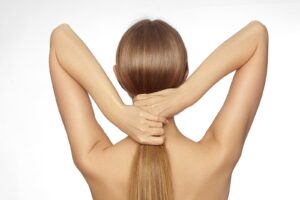Almost all people with hair use a hairbrush. Brushing is an essential part of keeping your hair strong, detangled, and shiny. The bristles in your brush redistribute oil from your scalp throughout the strand and shaft of your hair.
However, most people don’t realize how many options for hairbrushes there actually are available. Using the appropriate brush can help you style your hair more efficiently and prevent damage and breakage. It can also reduce frizz, improve blood flow, and facilitate healthy hair growth.
There are a few factors to consider before choosing a brush, such as hair type and condition. Read on for our tips on choosing the best brush for your hair.
Consider Your Hair Type
Hair type is a major factor to consider in choosing a new hairbrush. People with thin hair, for example, typically deal with different challenges when it comes to maintaining their hair than those with thick hair.
Thick Hair
In general, brushes with synthetic or nylon bristles are ideal for curly, thick hair. A round brush with boar bristles is also a good choice for maintaining volume and keeping curls tangle-free. Boar bristles lift away dirt and debris and coat strands with the scalp’s natural oils from root to tip. “They are also great for massaging the scalp, promoting blood flow, which is important for healthy hair,” according to hairstylist Kim Kimble.
Fine Hair
Since thinner hair is more susceptible to breakage, it is important to use a brush that will gently detangle the hair. According to celebrity stylist Andrew Fitzsimons, “Those with fine hair should be reaching for boar bristle brushes. This type of brush has soft bristles that are gentle on the hair and scalp. The bristles’ stiff texture detangles hair without pulling too hard, which can lead to hair breakage during styling.”
A round brush is also a great way to add volume and texture to fine hair. Thermal round brushes provided the bonus of lasting heat styling, which is great for building loose, natural waves.
Curly and Wavy Hair
A wide-tooth comb safely combs through hair and is great for distributing leave-in conditioners and treatments, which are important for keeping curly hair healthy and manageable. A paddle brush is also a great choice for its wide surface and smoothing tines, which allow for control without breaking natural curl patterns. A scalp brush is also great for removing the buildup left by hairsprays, gels, and mousses that are often used to keep curls in place.
Evaluate Your Lifestyle
Anybody who washes their hair or swims regularly can benefit from a detangling brush. Hair is in its weakest and most breakable state when wet. It is important to use a brush that will not tug too hard and cause excessive damage to release wet-hair tangles.
Detangling brushes are usually made with flexible bristles that are designed to undo stubborn knots. A wide-tooth comb is also a good option for preventing breakage. Since virtually everyone washes their hair, a brush or comb for wet detangling is a good thing for everyone to own. If you tend to brush less frequently, a detangler is essential for managing knots and taming frizz.
Choose Tools Based on Hair Length
You may not realize it, but the length of your hair is another factor you should consider in selecting the best brush to use.
Short Hair
People with short hair should go for a brush with a smaller surface area and wider bristles. A small, round brush is great for styling bangs, smoothing out flyaways, and managing textured bobs and pixie cuts. A smaller-barrel thermal round brush can also be great for detailing fine, short strands and blow-drying. There are also smaller styling brushes available for sculpting baby hairs and managing unruly edges.
Long Hair
A brush with a wide surface area is best for those with longer hair. A mix of nylon and boar bristles can be great for detangling long strands and simultaneously distributing natural oils efficiently. A paddle brush with nylon tines is the best choice for gently combing through long lengths without breakage, according to stylist Lauren Thompson.
Invest in Brushes for Hair Extensions and Wigs
If you wear human hair extensions regularly or clip in synthetic ones from time to time, a loop brush is a necessity. These brushes feature unique looped bristles that allow the brush to glide seamlessly across wefts without tangling or pulling them out. Loop brushes work for both permanent and temporary extensions and can help extend their lifespan and maintain their quality.
According to Miko Branch of The Hair Shop, the loop brush is “different from traditional hairbrushes because it has looped bristles that gently and smoothly glide through hair without tugging on strands. Anyone that uses extensions should try out a loop brush, as they can easily detangle hair without ripping out or damaging the extensions.”
A wig brush is essential for anyone who wears a wig, hair piece, or toupee. Wig brushes usually have stronger teeth than others so that the hair can slide through without snagging. Regular brushes with plastic bristles can easily damage the fibers of wig hair and make it even more challenging to remove knots. Wig brushes also have rounded tips, which are great for increasing circulation to the scalp. There are specific looped brushes for both synthetic and human hair wigs. A wig comb might also be useful for shorter lengths and bangs.
Contact Us
If you are in need of hair restoration in Baltimore and the surrounding regions, contact Eldorado today. Our hair replacement experts can help you choose the best hair loss solutions for your specific needs or identify the perfect human hair wig or Ultratress hair extensions for your ideal look. Call (410) 931-3399 to learn more.





